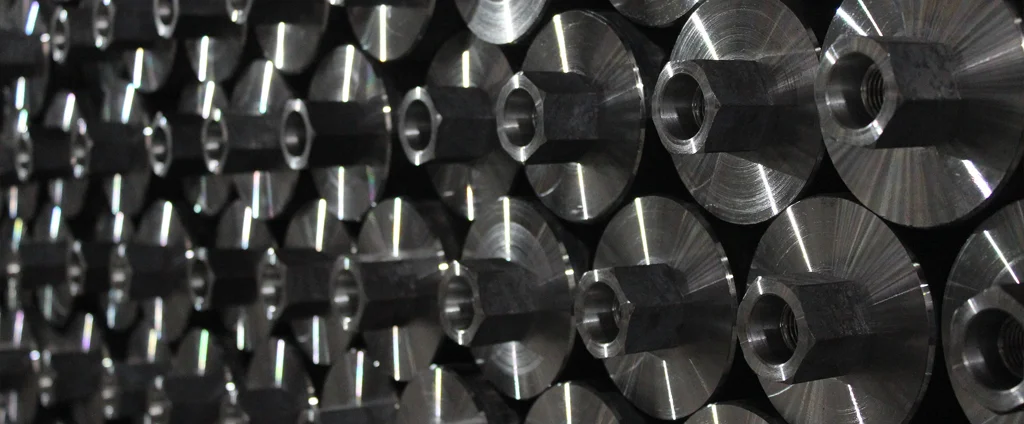SAE/AISI 5155 Alloy Steel (UNS G51550)

SAE/AISI 5155 is a medium-carbon chromium steel alloy valued for its combination of strength, toughness, and wear resistance. It offers good hardenability and cost-efficiency, making it suitable for components subjected to high mechanical stress or repeated impact.
| Chemical Composition | ||
|---|---|---|
| Element | Min | Max |
| Iron | 97.2% | 97.9% |
| Carbon | 0.51% | 0.59% |
| Chromium | 0.70% | 0.90% |
| Manganese | 0.70% | 0.90% |
| Phosphorous | —— | 0.035% |
| Silicon | 0.15% | 0.30% |
| Sulfur | —— | 0.04% |
The following table provides a list of SAE/AISI 5155 properties in both SI and US customary/Imperial units.
Click on the button to switch between Metric and Imperial units.
| Physical Properties | Metric |
|---|---|
| Density | 7850 kg/m3 |
| Mechanical Properties | Metric |
| Young’s Modulus (E) | 190 - 210 GPa |
| Bulk Modulus (K) | 140 GPa |
| Shear Modulus (G) | 80 GPa |
| Poisson’s Ratio (ν) | 0.27 - 0.30 |
| Brinell Hardness | 183 - 235 |
| Thermal Properties | Metric |
| Thermal Conductivity | 46.6 W/m·K |
| Specific Heat Capacity (Cp) | 470 J/kg·K |
| Coefficient of Thermal Expansion (αL) | 1.2×10-5 1/°C |
| Electrical Properties | Metric |
| Electrical Conductivity | 4.18×106 S/m |
| Electrical Resistivity | 2.4×10-7 Ω·m |
The values in this table are approximate and can vary depending on various factors such as the specific manufacturing process and heat treatment applied to the alloy.
Advantages & Disadvantages of 5155 Alloy Steel
| Advantages | Disadvantages |
|---|---|
| Excellent toughness | Limited corrosion resistance |
| High wear resistance | Moderate machinability |
| Good hardenability | Susceptible to decarburization during heat treatment |
| High strength and impact resistance | Requires proper heat treatment for optimal performance |
Applications of 5155 Alloy Steel
Thanks to its mechanical performance and durability, SAE/AISI 5155 is widely used across industries in demanding applications, including:
- Automotive Industry: Frequently used in the manufacturing of leaf springs, coil springs, and suspension components. Its high strength, toughness, and fatigue resistance support heavy loads and enhance vehicle durability.
- Heavy Machinery and Equipment: Employed in components such as torsion bars, stabilizer bars, and mechanical parts that require strength and resilience under high stress and cyclic loads.
- Hand Tools: Used in making tools like chisels, punches, and springs due to its wear resistance and toughness, enabling reliable performance under repeated impact.
- Agricultural Machinery: Utilized in parts such as tillage equipment, harrows, and plows where durability and resistance to abrasive wear are essential for effective field operation.
- Springs and Fasteners: Suitable for producing flat, coil, and helical springs, as well as high-strength fasteners like bolts and nuts that benefit from its impact resistance and hardenability.
